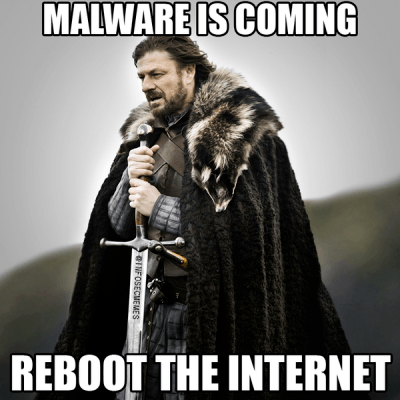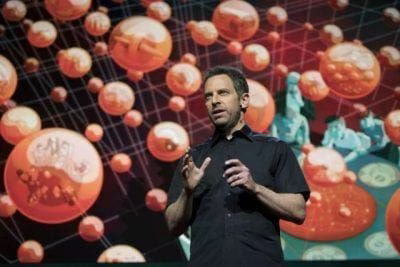Some Thoughts on Presentation Styles

I’m going to talk about presentations here, but keep in mind that most of my context is within the information security world, and each field has a dominant style of its own.
So here are my characterizations of various talk styles.
INFOSEC Style

InfoSec style talks can be summarized as slide-based descriptions of research that are designed to both inform and entertain. For a large part of the "in-crowd" talk circuit, however, the game is having slides that are funny, and ultimately convey to the audience that the presenter is both elite technically as well as likable. In short, it’s a slide-based popularity contest.
Characteristics include:
Talks are most popular when the presenter is making fun of how dumb something is.
The most common way of doing that is with humor, usually in the form of memes.
The goal of the presenter (whether aware of it or not) is often to raise the audience’s opinion of them personally by being entertaining as opposed to conveying a topic.
As a result, many people don’t remember the content of infosec after a few months. What they remember is whether they were entertained or not.
PROS: Entertaining, career-boosting for the presenterCONS: More entertainment than content, ideas are forgotten quickly
ESSAY Style

Essay style talks (alternatively, Dan Geer style) can be summarized as language-based narratives around ideas, which tend to be only loosely supported by slides. The goal there is to introduce new ideas into the public consciousness in what equates to a "performed essay".
Characteristics include:
The presenter is essentially reading a long essay.
They do their best to "perform" the essay, i.e. connecting with the audience in some way while still following the text precisely.
If slides are used, they are very much in a supporting role rather than primary. Their purpose is to enhance the content of the spoken essay, not to draw the attention.
PROS: Content-rich, usually bigger ideasCONS: Can be hard to stay engaged, risk of boring audience if not done well
TED Style

TED style talks can be summarized as highly refined visual narratives. They’re short, story-based essays that are supported by strong visuals and very little text. The main goal is to powerfully impact the audience with a single, clear idea.
Characteristics include:
The speaker is performing on stage without the support of a podium or a computer.
They will have a prompter that might show notes or the next slide, but the entire talk is meant to be memorized, often word for word, so that notes are not needed.
Talks are short, focused, and are designed to be extremely easy for the audience to follow.
The goal afterwards is for the audience to say, "Wow.", and to have them be able to easily convey the idea to others.
PROS: Highest quality, high production, elite feelingCONS: High cost to attend, high prep time for presenters, relatively few conferences with this style due to the production cost
Thoughts
For most of my career I’ve been doing the standard, InfoSec style of presentation, with some moderate measure of success. Honestly my ideas are far better than my presentations, and I think the style is a big part of that.
I’ve been wanting to transition to Dan Geer style for some time because I write much better than I meme, and I like to keep the ideas as a central focus. I also like the idea of a talk only being compelling if the ideas are strong enough on their own.
If you present in Dan Geer style and you don’t have something valuable to say, there aren’t any GIFs to save you. And I like that. It forces the issue of better content.
So I’m personally leaning towards more exploration of that style of talk, but I’m also planning to experiment with the TED style as well. The advantage there is that you can actually do TED style at almost any conference and the audience won’t really notice.
Summary
There seem to be distinct presentation types, which I categorize as INFOSEC, ESSAY, and TED style.
Infosec style talks are characterized by humor and entertainment conveyed by strong slides, Essay style talks are characterized by deep ideas conveyed through a reading, and TED style talks are characterized by short, memorized performances of a focused idea.
Because I like to write, I’m going to be experimenting a lot more with the essay style of presentation, and some TED style as well.
I think people should think about their natural style for conveying information, and ask themselves which of the INFOSEC, ESSAY, or TED styles fits best for them.
Notes
Keep in mind the generalizations about infosec talks are quite regional. In Europe, for example, talks tend to be quite a bit more dry, professional, and informative. Although quite a bit of the American humor / meme game has crept in there as well over the years.
There are also many people, both in the U.S. and elsewhere, that are extremely content-focused in their infosec talks. This is obviously a generalization, and doesn’t include everyone.
All the bad things I mention about infosec talks here I’ve done myself. So I’m throwing rocks out of my own glass house. But I’m looking at upgrading to 1) not throwing rocks, and 2) living outside.
Here’s a good example of Dan Geer’s presentation style, from his most popular talk at Blackhat 2014. Link >
Many senior presenters in infosec, i.e., people who are orienting their presentations towards corporate and c-level audiences, have made the move to TED style presentations. So, full-slide graphics, giant text (if any), and a walking / talking performance of memorized content.